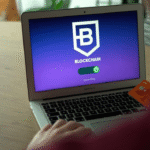
In recent years, the digital transformation of the financial landscape has been marked by the advent of blockchain technology and cryptocurrencies. One of the most ground-breaking applications of this technology is the tokenization of real-world assets. According to a report by Deloitte and also by the World Economic Forum, the tokenization market is expected to account for 10% of global GDP reaching $24 trillion of market volume by 2027, underscoring its growing significance.
This blog will guide you through the concept and process of tokenizing real-world assets, providing practical steps and key considerations for leveraging this innovative technology. So, without further ado, let’s get started:
What Are Real-World Assets?
Real-world assets refer to tangible and intangible items that exist off-chain (digital, physical, and data-based) that hold value in the physical world. These include real estate, commodities, artwork, intellectual property, and even shares in a company. Traditionally, investing in these assets involves substantial financial outlay, paperwork, and intermediaries, which can be barriers to entry for many investors.
Bonus! Read our detailed guide (Team link to PB1: Unlocking Digital Asset Basics: From Cryptocurrencies to Real-World Asset Tokenization) to ensure you have all the basic information related to crypto market and real-world asset tokenization.
The Concept of Tokenization
Tokenization involves converting the value of a real-world asset into a digital token on a blockchain. Each token represents a fraction of the asset, providing proof of ownership or a share of the asset’s value. This process enhances liquidity, accessibility, and efficiency in asset trading and management.
Benefits of Tokenization

1. Increased Liquidity
Tokenization significantly enhances market liquidity by dividing assets into smaller, more manageable tokens. Traditionally, high-value assets like real estate or fine art are accessible only to wealthy investors due to their substantial purchase price. However, by breaking these assets into tokens, a broader range of investors can participate.
This fractional ownership means that even individuals with limited capital can invest in previously inaccessible markets. As a result, the overall liquidity of these assets improves, facilitating easier buying and selling in the marketplace. Enhanced liquidity also tends to reduce price volatility, making the market more stable and attractive to investors.
2. Accessibility
One of the most transformative benefits of tokenization is its ability to lower the entry barriers for investment. In the traditional financial landscape, substantial resources and complex processes often exclude smaller investors from high-value asset classes.
Tokenization democratizes investment opportunities by allowing individuals to purchase fractions of assets. This increased accessibility means that more people can diversify their portfolios and participate in lucrative investment opportunities that were once reserved for institutional investors and high-net-worth individuals.
3. Transparency and Security
Blockchain technology, the backbone of tokenization, ensures that all transactions are transparent, traceable, and secure. Each transaction is recorded on an immutable ledger that is accessible to all participants, fostering a high level of transparency. This transparency reduces the risk of fraud and increases trust among investors. Additionally, the decentralized nature of blockchain enhances security by making it extremely difficult for any single entity to alter or manipulate transaction data. This robust security framework provides investors with confidence that their investments are safe and that the market operates fairly and efficiently.
Step-by-Step Guide to Tokenizing Real-World Assets

1. Identify the Asset
The first step in tokenization is to select the asset you wish to tokenize. This could be real estate, a piece of art, or any valuable commodity. Ensure the asset has a clear legal title and ownership, which is crucial for the subsequent steps.
2. Conduct a Feasibility Study
Assess the feasibility of tokenizing the asset. This involves evaluating the market demand, regulatory environment, and the technical infrastructure required. Consulting with a cryptocurrency investment consultant can provide valuable insights during this phase.
3. Choose the Right Blockchain Platform
Select a blockchain platform that supports tokenization. Popular choices include Ethereum, Binance Smart Chain, and Polkadot. Consider factors such as transaction speed, security, and scalability.
4. Legal and Regulatory Compliance
Compliance is critical in the tokenization process. Work with legal experts to ensure that your tokenization project adheres to local and international regulations. This includes securing the necessary licenses and adhering to KYC (Know Your Customer) and AML (Anti-Money Laundering) requirements.
5. Develop Smart Contracts
Smart contracts are self-executing contracts with the terms of the agreement directly written into code. They automate the token issuance, transfer, and management processes. Collaborate with a blockchain asset investments consultant to develop robust and secure smart contracts.
6. Token Issuance
Once the smart contracts are in place, the next step is to issue the tokens. Determine the total supply of tokens and their distribution. It’s crucial to maintain transparency during this process to build investor trust.
7. Asset Valuation
Accurate asset valuation is essential to determine the token price. Use reliable valuation methods and consider engaging professional appraisers. This ensures that the tokens reflect the true value of the underlying asset.
8. Marketing and Investor Relations
Effective marketing is key to attracting investors. Highlight the benefits of your tokenized asset and use platforms such as social media, forums, and industry events to reach potential investors. Maintaining strong hedge fund company investor relations is vital for long-term success.
9. Listing on Exchanges
To provide liquidity, list your tokens on reputable cryptocurrency exchanges. This allows investors to buy, sell, and trade tokens easily. Ensure that the chosen exchange complies with regulatory standards.
10. Continuous Management and Reporting
Tokenization is an ongoing process. Regularly update investors on the asset’s performance and market conditions. Utilize digital asset management services to streamline asset management and reporting.
Legal Considerations
Navigating the legal landscape of tokenization can be complex, requiring careful attention to various critical aspects. One of the foremost considerations is securities regulations. It is crucial to ensure that your tokens comply with securities laws, which vary significantly across different jurisdictions. This compliance helps prevent legal issues and enhances investor confidence.
Another important factor is intellectual property rights. Protecting any intellectual property associated with the asset is essential to prevent unauthorized use and ensure that all legal rights are secured.
Finally, understanding the tax implications of tokenization is vital. Both the issuer and the investors need to be aware of how tokenization affects their tax liabilities. Proper tax planning can help mitigate risks and ensure compliance with relevant tax laws, making the process smoother and more efficient.
Market Strategies

1. Diversification
Tokenization opens up new avenues for portfolio diversification. By tokenizing different asset classes, investors can spread risk and capitalize on various market opportunities.
2. Risk Management
Implement robust risk management strategies to protect against market volatility. This includes setting clear investment criteria and using hedging techniques.
3. Long-Term Growth
Focus on long-term growth by continuously innovating and adapting to market trends. Offering a mix of NFT investment platforms for unique tokens and stable investment options can attract a diverse investor base.
Diversify Your Portfolio and Secure Your Investments with Kenson Investments
Tokenization is revolutionizing the way we invest in real-world assets, offering unprecedented opportunities for liquidity, accessibility, and transparency. By following the steps outlined in this guide, you can successfully navigate the tokenization process and unlock the full potential of your assets.
At Kenson Investments, we specialize in digital asset investment solutions and provide expert guidance to help you leverage the power of blockchain technology. Whether you’re looking to tokenize your assets or seeking innovative investment strategies, our team of cryptocurrency investment consultants is here to assist you.
Join us on this transformative journey and explore the future of investment with confidence and clarity. For more details, feel free to reach out to us today!
Disclaimer: The information provided in this blog is for educational and informational purposes only and should not be construed as financial advice. Crypto currency investments involve inherent risks, and past performance is not indicative of future results. Always conduct thorough research and consult with a qualified financial advisor before making investment decisions.














